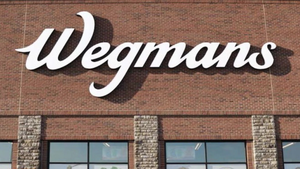Panel: Wellness trend presents new challenges for retailPanel: Wellness trend presents new challenges for retail
While the health and wellness movement presents retailers with an opportunity to engage customers like never before, doing so effectively requires authenticity — and a delicate touch.
While the health and wellness movement presents retailers with an opportunity to engage customers like never before, doing so effectively requires authenticity — and a delicate touch.
That was one message from a panel of experts speaking Wednesday at SN’s Health and Wellness Summit at Natural Products Expo East in Baltimore. The Consumer Insights Panel, moderated by SN executive director of content David Orgel, also highlighted changes in consumer attitudes about food that are evolving faster than conventional food systems can adjust.
Kim Kirchherr, health and wellness advisor at IGA and a registered dietitian for the chain, acknowledged that while the healthy eating trend has spread to mainstream, its adherents are scattered all along the wellness spectrum, making “wellness for the masses” a tricky sell. She urged retailers to remember wellness is an emotional, and personal, issue for every shopper. “Health and wellness is a lifestyle,” she said. “It isn’t just a moment in time.”

SN’s David Orgel (left) moderates consumer insights panelists John Grubb of Sterling Rice Group, Kim Kirchherr of IGA and Eric Pierce of New Hope Natural Media. (Photo by Kate Patterson)
Kirchherr said retailers should approach wellness marketing with the understanding that some shoppers will proactively seek better-for-you foods, while others approach the category from a standpoint of treating a specific health condition. Eating healthy, she added, is relative from person to person. “The person who eats three doughnuts and a banana for breakfast could be coming from six doughnuts and no fruit,” she noted.
“So everybody’s health and wellness journey has to be honored,” she said. “You have to remember the human being at the end of the message, and if you truly want to resonate with them you have to do it authentically.”
The power to craft a message at supermarkets is shifting from food manufacturers to retailers as a result of consumers losing trust in “big food” as the wellness movement has advanced, panelist John Grubb, managing partner at Sterling Rice Group, said.
“There is a real discontinuity between cultural evolution and what our food supply chain is structured to offer,” Grubb said. “We have a magnificent and cost-efficient industrial food supply chain that is optimized for cost and for certain ingredients like corn and soy. And its very inflexible. There’s a real gap between what consumers are asking for and what is primarily in the center of the store.”
While CPG companies are now acknowledging that change — with some now making acquisitions of natural brands to restore growth — “the historically symbiotic relationship between retail and the big CPG compamies is gravely threatened,” Grubb said.
“I would expect retailers to take things into their own hands more and more, and not rely so much on slotting dollars and trade promotions that his historically fueled profitability in the industry,” Grubb said.
Follow @SN_News for updates throughout the day.
Growth in health and wellness has accompanied a decline in consumer trust among conventional food brands, said panelist Eric Pierce, director of strategy and insights for New Hope Natural Media.
Pierce said supermarkets can stay ahead by augmenting their traditional strength in data collection and analysis in stores with a greater focus on what customers are talking about, even when those things aren’t evident in current sales trends.
“In these dynamic times I’d encourage you to keep one eye on the future,” Pierce said. “Look at what consumers are saying they want, even if that doesn’t match up with the behavior you see in your store. Balance the data you have with what you don’t have.”
About the Author
You May Also Like








